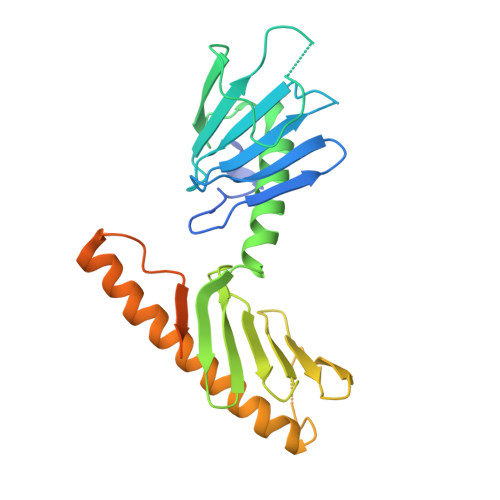Phase separation of Polo-like kinase 4 by autoactivation and clustering drives centriole biogenesis.
Park, J.E., Zhang, L., Bang, J.K., Andresson, T., DiMaio, F., Lee, K.S.(2019) Nat Commun 10: 4959-4959
- PubMed: 31672968
- DOI: https://doi.org/10.1038/s41467-019-12619-2
- Primary Citation of Related Structures:
6N45, 6N46 - PubMed Abstract:
Tight control of centriole duplication is critical for normal chromosome segregation and the maintenance of genomic stability. Polo-like kinase 4 (Plk4) is a key regulator of centriole biogenesis. How Plk4 dynamically promotes its symmetry-breaking relocalization and achieves its procentriole-assembly state remains unknown. Here we show that Plk4 is a unique kinase that utilizes its autophosphorylated noncatalytic cryptic polo-box (CPB) to phase separate and generate a nanoscale spherical condensate. Analyses of the crystal structure of a phospho-mimicking, condensation-proficient CPB mutant reveal that a disordered loop at the CPB PB2-tip region is critically required for Plk4 to generate condensates and induce procentriole assembly. CPB phosphorylation also promotes Plk4's dissociation from the Cep152 tether while binding to downstream STIL, thus allowing Plk4 condensate to serve as an assembling body for centriole biogenesis. This study uncovers the mechanism underlying Plk4 activation and may offer strategies for anti-Plk4 intervention against genomic instability and cancer.
Organizational Affiliation:
Laboratory of Metabolism, National Cancer Institute, National Institutes of Health, 9000 Rockville Pike, Bethesda, MD, 20892, USA.














